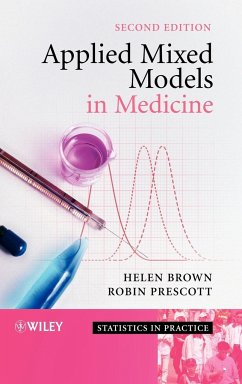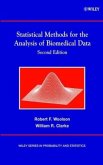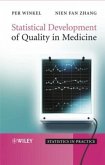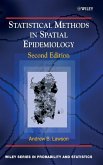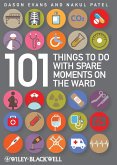Dieser Band beschäftigt sich mit kombinierten Modellen, einem bekannten statistischen Analyseverfahren, das häufig im Bereich multivariater Daten Anwendung findet. Hier werden die verschiedenen Modellarten sowie deren spezifische Anwendungsprobleme detailliert beschrieben und diskutiert. Die Autoren geben darüber hinaus Hinweise, wann konventionellere Modelle bevorzugt werden sollten. Verständlich geschrieben und mit umfangreichem Beispielmaterial. A mixed model allows the incorporation of both fixed and random variables within a statistical analysis. This enables efficient inferences and more information to be gained from the data. The application of mixed models is an increasingly popular way of analysing medical data, particularly in the pharmaceutical industry.
A mixed model allows the incorporation of both fixed and random variables within a statistical analysis. This enables efficient inferences and more information to be gained from the data. The application of mixed models is an increasingly popular way of analysing medical data, particularly in the pharmaceutical industry. There have been many recent advances in mixed modelling, particularly regarding the software and applications. This new edition of a groundbreaking text discusses the latest developments, from updated SAS techniques to the increasingly wide range of applications.
_ Presents an overview of the theory and applications of mixed models in medical research, including the latest developments and new sections on bioequivalence, cluster randomised trials and missing data.
_ Easily accessible to practitioners in any area where mixed models are used, including medical statisticians and economists.
_ Includes numerous examples using real data from medical and health research, and epidemiology, illustrated with SAS code and output.
_ Features new version of SAS, including the procedure PROC GLIMMIX and an introduction to other available software.
_ Supported by a website featuring computer code, data sets, and further material, available at: http://www.chs.med.ed.ac.uk/phs/mixed/.
This much-anticipated second edition is ideal for applied statisticians working in medical research and the pharmaceutical industry, as well as teachers and students of statistics courses in mixed models. The text will also be of great value to a broad range of scientists, particularly those working the medical and pharmaceutical areas.
A mixed model allows the incorporation of both fixed and random variables within a statistical analysis. This enables efficient inferences and more information to be gained from the data. The application of mixed models is an increasingly popular way of analysing medical data, particularly in the pharmaceutical industry. There have been many recent advances in mixed modelling, particularly regarding the software and applications. This new edition of a groundbreaking text discusses the latest developments, from updated SAS techniques to the increasingly wide range of applications.
_ Presents an overview of the theory and applications of mixed models in medical research, including the latest developments and new sections on bioequivalence, cluster randomised trials and missing data.
_ Easily accessible to practitioners in any area where mixed models are used, including medical statisticians and economists.
_ Includes numerous examples using real data from medical and health research, and epidemiology, illustrated with SAS code and output.
_ Features new version of SAS, including the procedure PROC GLIMMIX and an introduction to other available software.
_ Supported by a website featuring computer code, data sets, and further material, available at: http://www.chs.med.ed.ac.uk/phs/mixed/.
This much-anticipated second edition is ideal for applied statisticians working in medical research and the pharmaceutical industry, as well as teachers and students of statistics courses in mixed models. The text will also be of great value to a broad range of scientists, particularly those working the medical and pharmaceutical areas.
" easy to read, interesting, and informative " ( Journal of Biopharmaceutical Statistics , Vol. 17, Issue 4, 2007) "This second edition gives an overview of the theory of mixed models and its application to data in medical research." ( Zentralblatt MATH, April 2007) " takes a practical rather than theoretical approach and requires understanding of only basic statistics." ( MAA Reviews , October 30, 2006)

